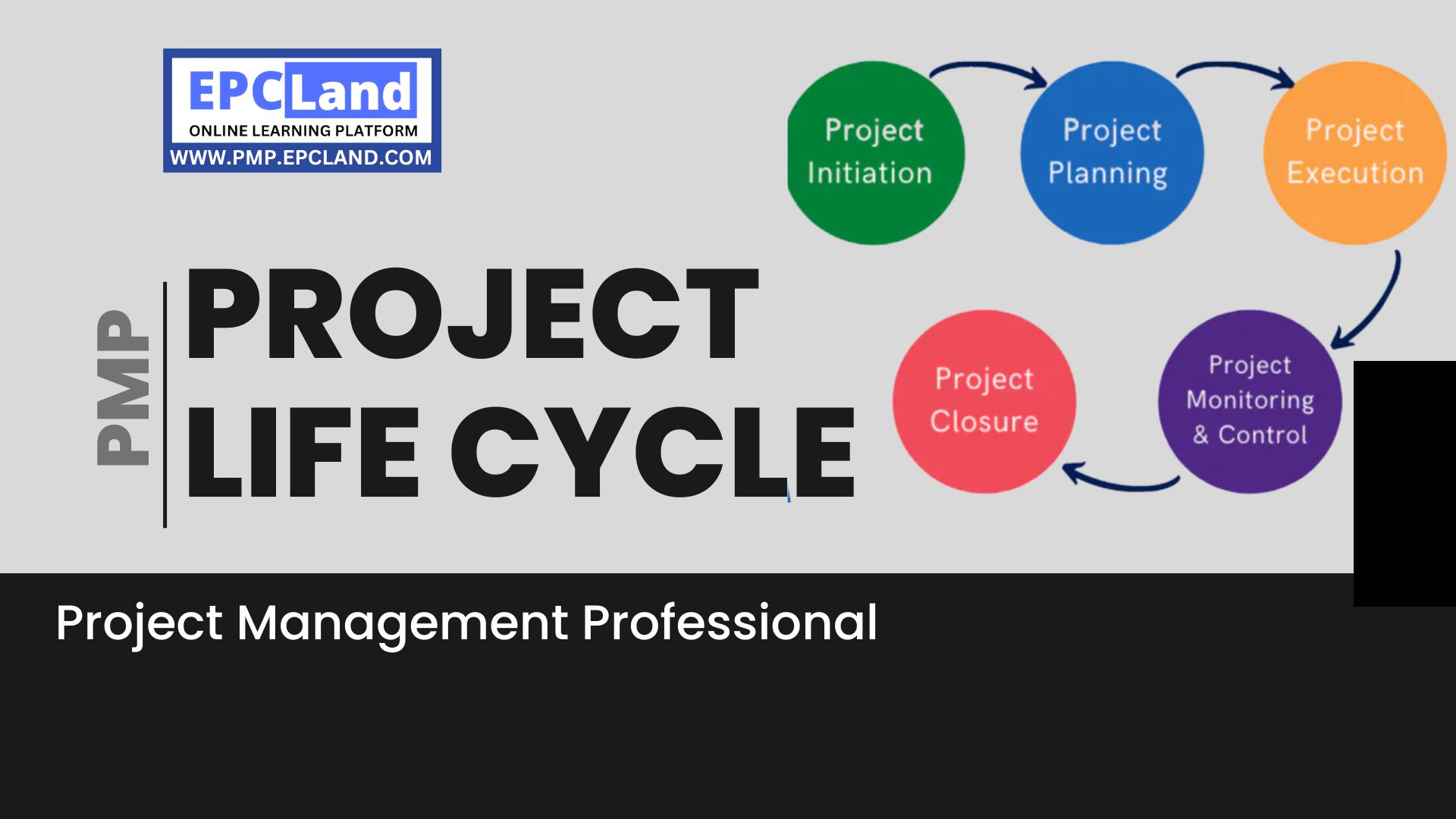Extensive, resource-intensive, strategically important and complex projects require a higher level of project management knowledge.
The Project Management Institute (PMI) has created the Project Management Lifecycle. It’s a framework that helps project managers run their projects smoothly and effectively.
For project managers, Life Cycle increases project cohesion and allows all team members to be on the same page and collaborate with relative ease, especially when multiple departments are involved. I can.
Let’s see how it works.
Table of Contents
ToggleAttempt Quiz-1 Test your knowledge about Project Planning

Time's up
What is the project lifecycle?
The project lifecycle contains the steps a project manager needs to successfully manage a project from start to finish.
The project lifecycle consists of five phases. Each of these project phases represents a group of interrelated processes that must be performed for the project to be successful.
Don’t Miss the 1000+ MCQ questions & hundreds of quizzes on PMP Knowledge Areas and Various important sections.
Initiating phase
The initiation phase of the project lifecycle consists of two separate processes:
Project Charter and Stakeholder Registry. During this phase, you set a vision for your project, document what you want to achieve through your business case, and secure approval from sanctions stakeholders. The main components of a project outline are:
• Business case
• Project scope
• Deliverables
• Objectives
• Resources needed
• Milestone plan and timeline
• Cost estimate
• Risks and issues
• Dependencies
If you take the time to clearly define your goals, your project will be easier to tackle.
All parties can discuss their own suggestions and concerns, and budgets and costs can be pre-agreed and approved. This initiation phase is important not only for the project, but also for communicating what the project requires to all involved teams.
Planning stage
During the planning stage, it is important to first outline and define the reasons for the project. Answering the following questions will clarify what your project needs to accomplish.
- what exactly are you going to do?
- how do you do
- when will we do it How will I know when it’s done?
As part of the planning phase, you should work with your team to set up all the infrastructure and delegate certain tasks. This plan should include:
• Project management plan
• Project scope
• Work breakdown structure
• Resource plan
• Budget estimation
Engaging the entire team to execute a plan can be difficult. But if all departments are given a chance to participate in planning, it will be less of a problem later on.
Attempt Quiz-2 Test your knowledge about Project Planning

Time's up
Execution phase
The execution phase should include the following key parts:
- team development
- Stakeholder engagement
- quality management
- communication
- Client management
Magic happens here. Most of the budget is allocated and most of the project deliverables are produced. Put your project plans into action, whether it takes weeks, months, or years.
Villanova University defines the goal of this stage as “effectively managing the team while adjusting schedule expectations and meeting benchmark goals.”
Communication is key during this time. Customers and stakeholders may require updates and progress reports.
A reliable project management system will save you and your team a lot of headaches. It makes checking tasks easier, see where deadlines and deliverables have passed, and gives you and your team insight into what still needs to be done. Adobe Workfront allows you to share information across project teams and simplify reporting to customers and stakeholders.
Monitoring and control phase
During the monitoring and control phase, attention should be paid not only to the overall progress of the project, but also to individual aspects.
When following up and reporting back to your team, you should always be vigilant and stay up-to-date so that potential issues can be recognized before they spiral out of control.
It also costs money to have another member of the project team (or one of her from each department) as an additional quality controller or rapporteur. They will help you stay on top of your team and hold regular meetings to keep you on top of all aspects and keep everyone on track
Don’t Miss the 1000+ MCQ questions & hundreds of quizzes on PMP Knowledge Areas and Various important sections.
Closing phase
The final phase of the project lifecycle is the completion phase. It doesn’t just check the project as done and close the project. It is important to formally close the project and ensure approval or acceptance by the customer, stakeholders and/or project sponsor.
This process includes:
- handover of the project
- Hold a post-event meeting
- Archiving project documents
- celebrate or acknowledge an achievement
- Official disbandment or release of the team
The importance of this final step in the project lifecycle cannot be overstated as more and more organizations adopt the Hollywood Working Model. That is, a temporary team gathers around a particular project, breaks up, and regroups for another project. This is important for project management teams, especially those involving freelancers and consultants.
Summary of Project Life Cycle
It’s great to be able to effectively manage projects using this lifecycle, this covers details of complete project life cycle. In Short, the life cycle of the project can be summarized in following
- Project start
Initiation is the first phase of the project life cycle. This is where project value and feasibility are measured. A project manager typically uses two of her evaluation tools to decide whether to proceed with a project:
Business Case Document – This document justifies the need for the project and provides an estimate of potential financial benefits.
Feasibility Study – This is an evaluation of the project objectives, schedule and costs to determine if the project should proceed. Compare your project needs with available resources to see if it makes sense to do it.
The team abandons proposed projects that are flagged as unprofitable or unfeasible. However, projects that pass these two tests can be assigned to a project team or a specific project office.
- Project plan
Once your project is approved, you need a solid plan to guide your team and ensure you’re on time and on budget. A well-crafted project plan provides guidance on procuring resources, financing, and procuring necessary materials. A project plan provides direction for teams to achieve high-quality deliverables, manage risk, gain buy-in, communicate benefits to stakeholders, and manage suppliers.
A project plan also helps the team understand the cost, scope, and timeline of the project for any roadblocks that may be encountered along the way.
- Project implementation
This is the phase most commonly associated with project management. Execution is about providing a service that satisfies the customer. Team leaders do this by allocating resources and keeping team members focused on their assigned tasks.
Execution is highly dependent on the planning phase. The team’s work and effort during the execution phase is derived from the project plan.
- Project monitoring and control
Since monitoring and control are often concurrent, they are sometimes combined with execution. As teams execute their project plans, they must constantly monitor their own progress.
To ensure promised delivery, teams must monitor tasks to prevent scope escalation, calculate key performance indicators, and track deviations from allocated costs and time. This constant vigilance helps the project run smoothly.
- Project completion
Teams’ complete projects by delivering completed projects to clients, communicating completion to stakeholders, and freeing up resources for other projects. This critical step in the project lifecycle allows teams to assess and document projects, move on to the next, and leverage the failures and successes of previous projects to build stronger processes and more successful teams. can.
Project management can seem overwhelming at times, but breaking it down into these five distinct cycles will help your team manage even the most complex projects and allocate time and resources wisely.










